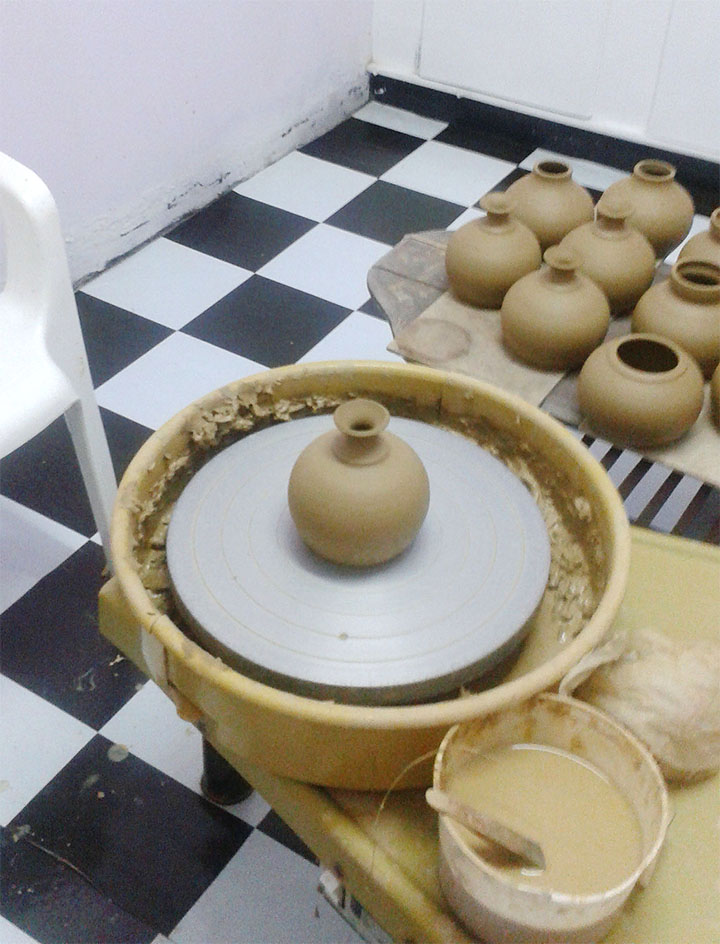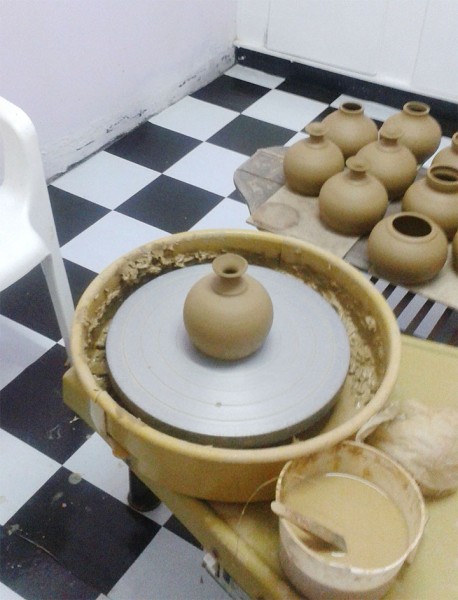The past president of the Guyana Arts and Craft Producers Association (GACPA) Nicholas Young believes that the two-week workshop on mould design and manufacturing from May 25- June 15, being executed by the Georgetown Chamber of Commerce and Industry (GCCI) in collaboration with the Caribbean Technological Consultancy Services Network (CTCSN) and the GACPA could well signal an important turning point in the history of what he believes is an important sub-sector in the art and craft sector.
Young, the owner of the local enterprise, Rainforest Pottery, says that over time local pottery has not only failed to take advantage of what is a potentially lucrative market opportunity, but has also been unable to meet the demands of the overseas market for local creations.
“I have been to several trade shows in the Caribbean, North America and Europe. We have been unable to fulfil the orders because we cannot produce the quantities required,” he said. “You get orders for three to four thousand pieces, but you cannot produce to meet the demand. At one point in time I had a website. I had to take it down because I could not fulfil the orders that I was getting. Countries that attract thousands of tourists are clamouring for these souvenir pottery pieces, but we cannot produce the quantities.”
For the time being at least, Young says, he has resigned himself to limiting his production to meeting the demands of a modest and less than lucrative local market. “Unless I can have help with production I will simply have to confine myself to doing what I can,” he says.
The forthcoming seminar, Young says, has sparked a measure of optimism.
It was while he was on a Caribbean Export-sponsored visit to Jamaica last year that he met Robert Campbell, a renowned Jamaican mould-maker whose work had made a significant impact on his country’s craft industry. Moulds have revolutionized the global pottery industry by allowing for pieces to be quickly and easily replicated. Historically, Guyana’s pottery sector has been through the painstaking fashioning of individual pieces on the Potter’s Wheel. Young explains that this method of producing pottery requires skills that must be learnt. A complex piece of pottery can take several hours to produce.
The idea behind moulding is to manufacture templates into which the material can be placed and pressed to a predetermined shape then left to dry and be appropriately decorated.
The idea is not to shelve the use of the Potter’s Wheel, but Young explains that the popularization of moulding is a response to the need to accelerate production in the sub-sector. Working with moulds not only reduces the skills needed at the workplace but also significantly increases the rate at which the pieces of pottery is produced.
Young is quietly optimistic that the presence of Campbell here and the advent of the workshop can leave a mark on the other sub-sectors. Accordingly, groups and individuals in the jewellery and doll-making sectors, among others, have also been invited to the workshop.
Young believes that given the abundance of clay in Guyana, an enhanced knowledge of mould-making might well change the face of several sub-sectors in the craft industry. He says that utilizing the Potter’s Wheel production can be pegged at as few as twelve pieces daily. Moulds can triple that amount easily. Equally importantly it reduces the demand for skilled workers.
The mould can be re-used several times daily. It is simply a matter of pouring material into it and leaving it to set, at best, for a few hours.
Clay can easily be acquired from dug canals, dried and soaked again for a few days, dried then soaked again after which it is passed through a sieve to remove pebbles and other foreign objects. The clay is then put in the sun to dry to the point of kneading texture. Afterwards it is cut into various sizes and literally pressed into service. After trimming the completed item is ready for heating in a kiln which can take as long as seven hours. A subsequent four-hour cooling process precedes the design work that is applied to the finished item.
Young himself specializes in creative pieces that parade Amerindian motifs.
Having long endured the limitations of under-production, Young is cautiously optimistic about the change that this month’s seminar on mould-making can bring. For him, what is crucial is that participants take advantage of opportunity to bring a measure of meaningful change to an industry that is yet to realize its potential.








